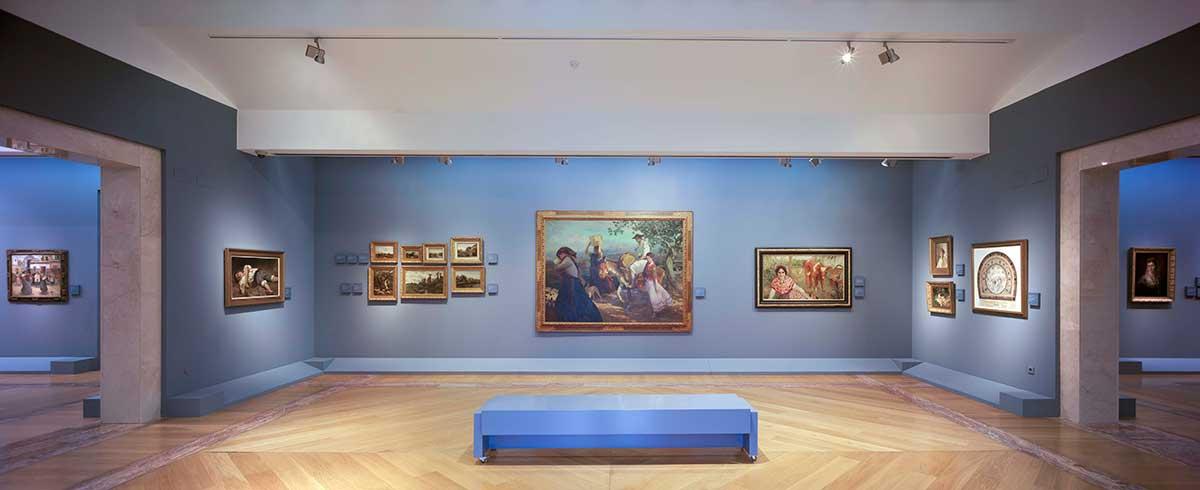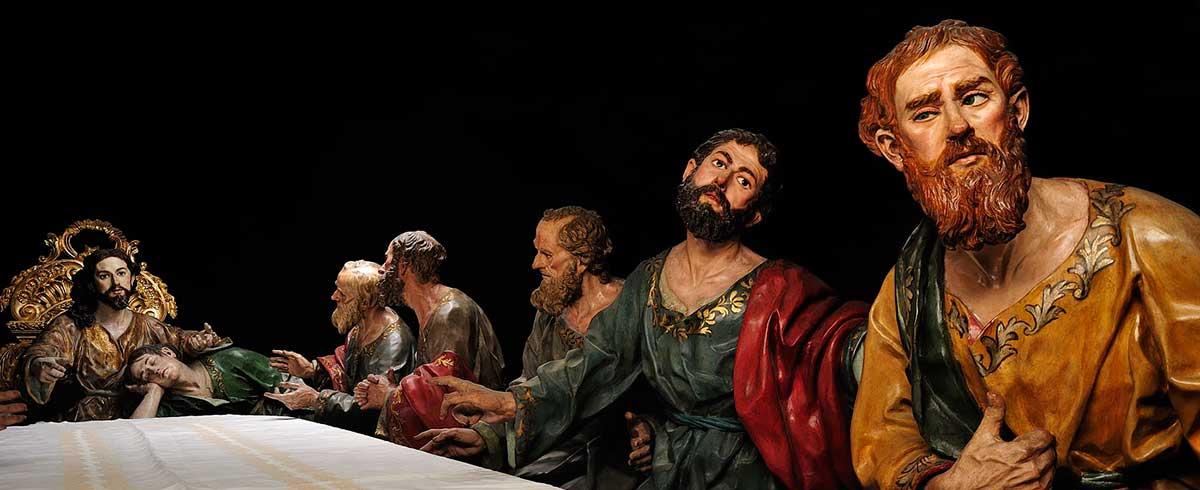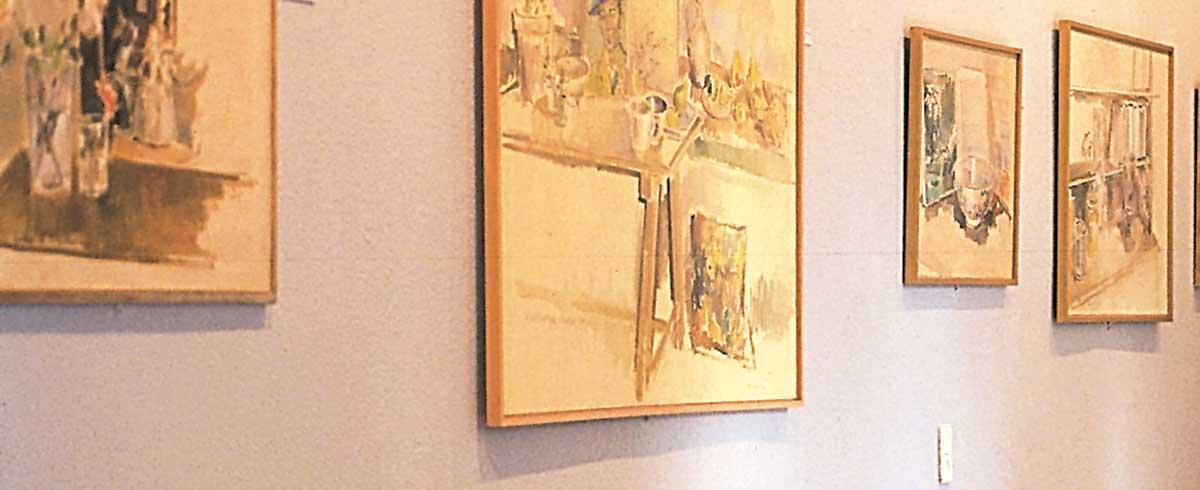CATHEDRAL MUSEUM
Located in the chapter house and former 14th century cloister of the Cathedral, the museum opened to the public in 1956 and underwent a major renovation a few years ago.
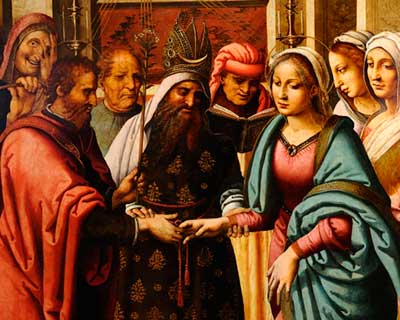
A tour through the museum teaches visitors about the works in the most important collection of sacred art in Murcia, led by an interesting explanation that explains all the life behind them. A spaced filled with history and modernity, in which paintings from the Italian trecento, paintings by Luca Giordano, and incredible sculptures by Francisco Salzillo, sit alongside delicate textiles and beautiful pieces of silverware.
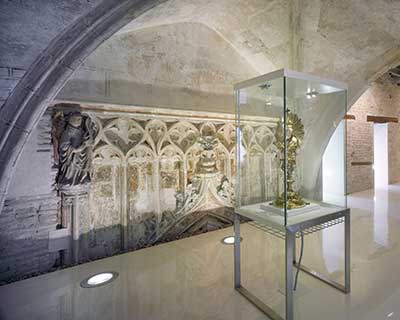
Additionally, visitors can enjoy the new findings unearthed by the refurbishment, with the archaeological remains of the subsoil giving an excellent indication of the constructive evolution of the building. Among the most interesting remains are unfinished decorative elements that have been restored.
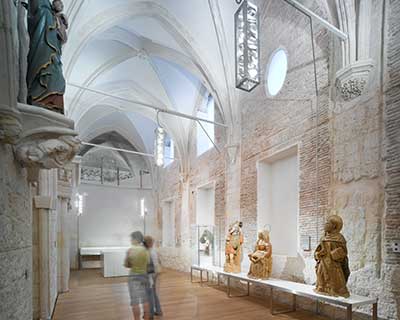
Entrance to the museum also lets you opt for a guided tour through the cathedral, as well as allowing you to climb the tower, an incredible experience combining history, art, and a unique panoramic view of the city. Climbing the tower also allows you to discover the its magnificent construction, a gem of the renaissance and baroque periods, accessing the secret chamber, the chapel, the balcony of incantations and the bells.
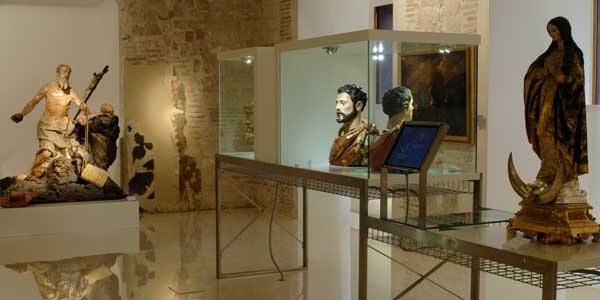
SALZILLO MUSEUM
The Murcian sculptor Francisco Salzillo is, without a doubt, the finest example of Spanish sculptors from the 18th century, and one of the greats within a large array of Spanish baroque artists dedicated to religious sculpture.
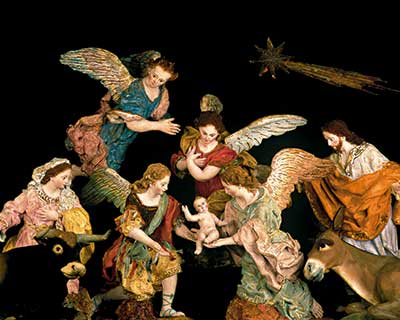
The museum is comprised of very different spaces that blend together harmoniously: the Church of Our Father Jesus, a baroque building from the 17th century, and the avant-garde architecture of the new building. Additionally, the permanent exhibition of the museum has a large collection of original sketches from Salzillo’s workshop.
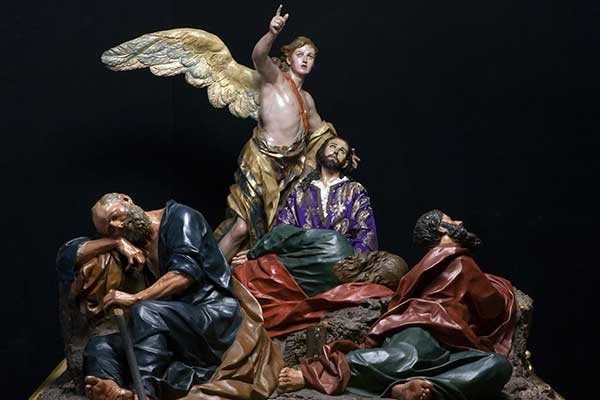
The Nativity scene is made up of nearly 600 pieces, each no more than 30 cm, made of clay and richly polychromed. It portrays the birth of Christ, and recreates the main episodes of the gospel story, and the most picturesque aspects of rural and pastoral life in the 18th century.
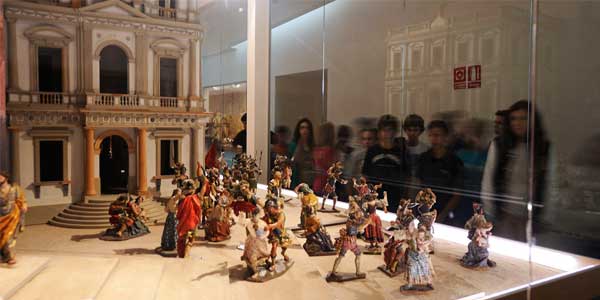
The processional pasos (floats with religious sculptures) belong to the Brotherhood of Our Father Jesus of Nazareth, which has a vital link with the city, and whose most significant public event is the morning procession on Good Friday.
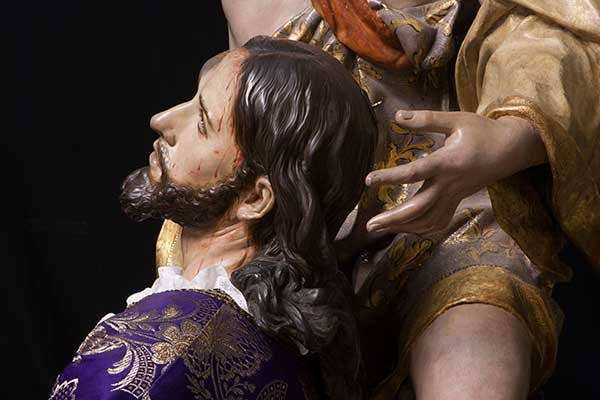
Also of note is the rich collection of sumptuary arts belonging to the paso’s processional objects, with important examples of fabrics, gold work and embroidery from the 17th, 18th and 19th centuries.
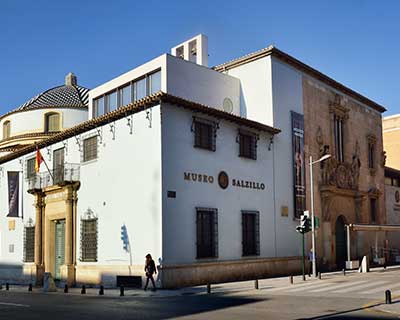
For guided visits contact the Museum.
Parador de Jardín San Agustín.
SANTA CLARA MUSEUM
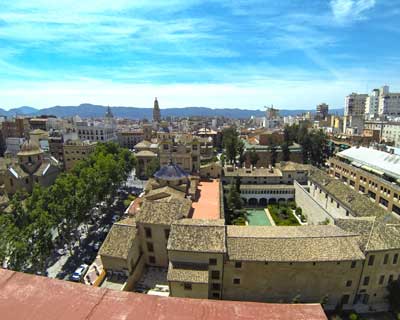
Along with the Cathedral, this is the place that best reflects the history of Murcia from the Middle Ages to the present day. The building was a palace for the Muslim emirs in the 12th and 13th centuries, alcázar for the Castilian monarchs and royal monastery for the Order of Santa Clara from 1365 until modern times.
The presence of a Muslim summer palace (Alcázar Seguir) outside the city is due to the importance that Murcia gained in the Al-Andalus political landscape.
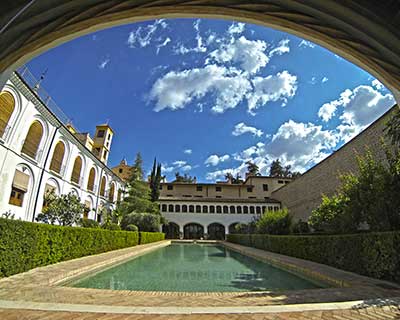
In the Al-andalus archaeology section, the room of Shar al-Andalus is of particular interest, showing the luxury and ostentation of courtesan life. Other items of note include a bronze flask with epigraphic writing, a short sword, pieces of glass and bone, golden jewellery created in Nasrid workshops and coins.
In the Times of Silence room, there is an entire section dedicated to sacred art located in the upper choir and gallery of the monastery. There are art works on display by the Poor Clares, a monastic heritage brought together through donations or gifts from the novices on entering the convent.
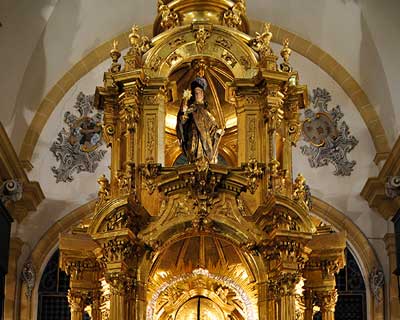
A visit to the museum also allows you to view the 13th century Arabic pool, the Gothic gallery of the cloister and the pictorial representations of dragons in the choir, also in Gothic style.
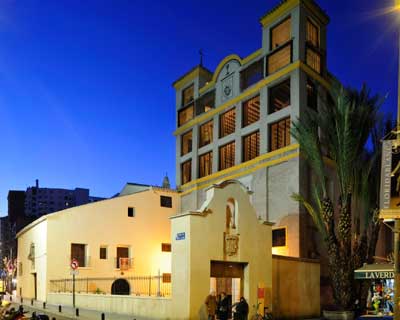
Tuesday - Saturday: 10:00-13:00 and 16:00-18:30 Sunday and holidays: 10:00-13:00.
Tuesday - Sunday and holidays: 10: 00-13: 00.
Guided tours winter:
10:00h, 11:00h, 12:00h, 16:30h, 17:00h, 11:00 a.m., 12:00 a.m.
ARCHAEOLOGICAL MUSEUM
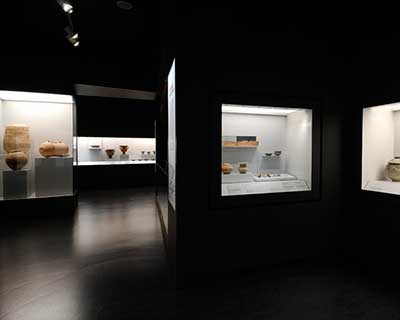
This educational space is home to important findings, mostly from archaeological sites of the Region of Murcia. A total of 17 rooms spread over 2 floors offers visitors a complete tour of the history of human evolution, from the Palaeolithic era to the Bronze Age, passing through protohistory and history to the Christian and Visigoth periods.
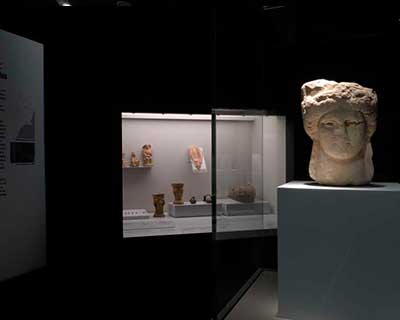
Among its notable collections are those of the Argaric, Iberian and Roman eras, from such important archaeological sites as Cabecico del Tesoro and La Luz, Jumilla, Moratalla, Archena, Fortuna, Totana and Algezares.
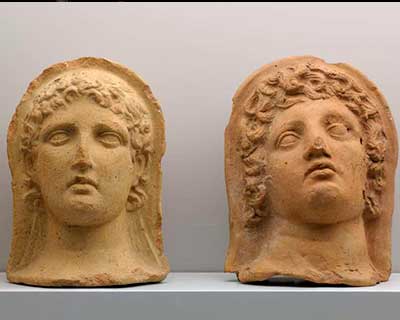
The museum was built during the reign of Isabel II, 1864 to be precise, and was at first the headquarters of the Infantes Theatre (now the Romea Theatre), become in 1866 the Silk Weights and Measurement Office, and in 1910 the current Museum of Fine Arts, before it moved to its current base in 1953. Located on one of the main streets in the city centre, on Paseo Alfonso X, this is one of the most important museums to the history of Murcia, and boasts an enticing program of temporary exhibitions.
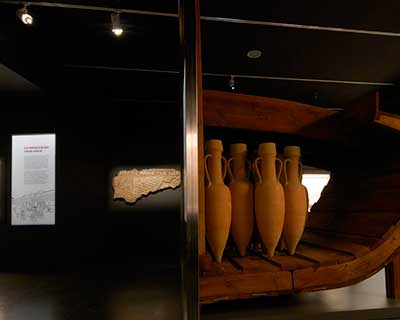
Tuesday - Friday: 10:00-14:00 and 17:00-20:00 Saturday - 11:00-14:00 and 17:00-20:00h.
Sundays and holidays: 11:00-14:00
Tuesday - Friday: 10:00-14:00h. Saturdays, Sundays and public holidays: 11:00-14:00
MUSEUM OF FINE ARTS
Located in the popular neighbourhood of Santa Eulalia, this is one of the most deeply-rooted institutions in Murcia. The museum has two halls: The Pabellón Cerdán, which houses the permanent exhibition, and the Pabellón Contraste, for temporary exhibitions and the library centre.
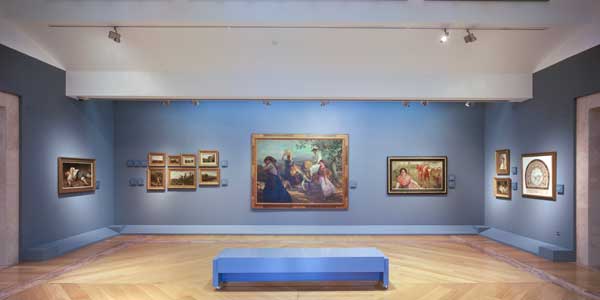
The MUBAM, as the museum is commonly known, has an important collection of paintings with works by Murillo (Crucifixion and Ecce Homo), Zurbarán, Rafael Tejeo, Martínez Pozo, Medina Vera, and Pedro Orrente, among others.
There are also has spaces dedicated to sculpture, the decorative arts of glass and ceramics, and editions of antique books.
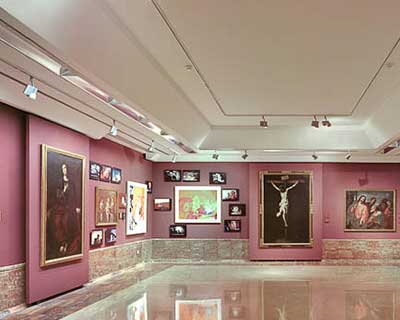
The permanent collection is spread throughout 8 rooms, as follows: Room I. Painting of the 15th and 16th centuries. The Renaissance in Murcia. Room II. Art in Murcia during the 17th century. Room III. Art of the 17th century. The painting of the Golden Age. Room IV. Cabinet of art. Room V. The Enlightenment and the 18th century in Murcia. Art during the 18th century. Room VI. From Academicism to Eclecticism. The major pictorial genres. Room VII. Costumbrist painting. Regionalism. Room VIII. Allegorical Art Room. Decorative painting. The Landscape. Temporary Exhibition Room.
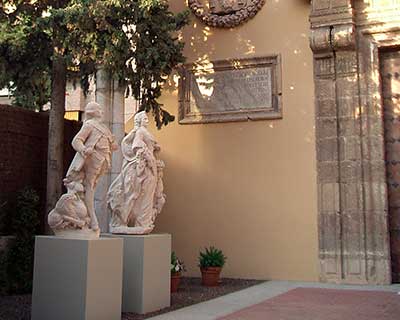
Tuesday - Friday: 10:00-14:00 and 17:00-20:00 Saturday - 11:00-14:00 and 17:00-20:00 .
Sundays and holidays: 11:00-14:00.
Tuesday - Friday: 10:00-14:00h. Saturdays, Sundays and public holidays: 11:00-14:00.
RAMÓN GAYA MUSEUM
This museum exhibits the work of Ramón Gaya, one of the finest contemporary Murcian painters winner of the National Plastic Arts Award, the Gold Medal of the City of Murcia, and the Velázquez Prize for Plastic Arts.
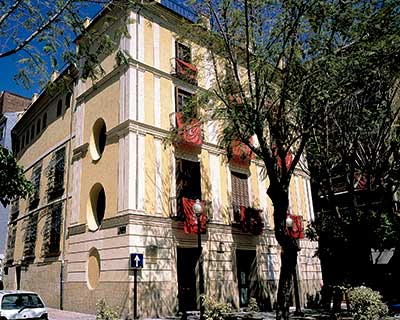
It is based in a beautiful 19th century ancestral mansion, Casa Palarea, located in Plaza de Santa Catalina, what was the heart of the Medieval and Baroque Muslim city and one of the city’s most traditional plazas. Converted into a museum dedicated to the artist in 1990, it is made up of two buildings.
Inside, you can explore the fascinating artistic life of the painter and writer Ramón Gaya (1910-2005), through the 500 pieces that make up the collection. Born in Murcia, his start in painting went hand in hand with Pedro Flores and Luis Garay. Trained in Madrid and in contact with Juan Ramón Jiménez and almost all of the Generation of 27, he is not identified with the avant-garde painting of the time.
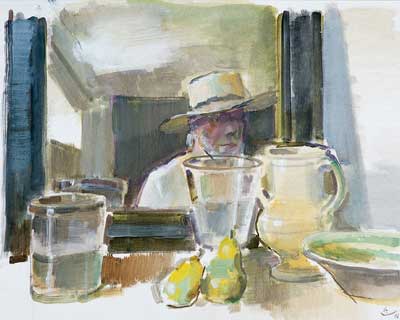
Paris, Venice, Florence, Rome and Mexico are just some cities in which he lived and where he studied the work of the great masters to whom he always references in his works: Cezanne, Van Gogh, Titian, Rembrandt and Michelangelo. He tackles many of the major themes of art: The Baptism, the Burial of Christ, Noli me tangere, etc.
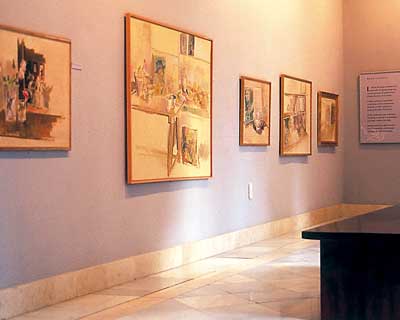
Monday to Saturday: 10:00 to 14:00 and 17:00 to 20:00 Sunday and public holidays: 11:00 to 14:00
Monday - Friday: 10:00 to 14:00 and 17:00 to 20:00.
CITY MUSEUM
Located in the former home of the López-Ferrer family, this 19th century building has origins dating back five centuries. On this same site in the 16th century stood the so-called Junterón Tower, home of Don Gil Rodríguez de Junterón, a prominent figure of the era who served as Archdeacon of Lorca and Protonotary of Pope Julius II in Rome.
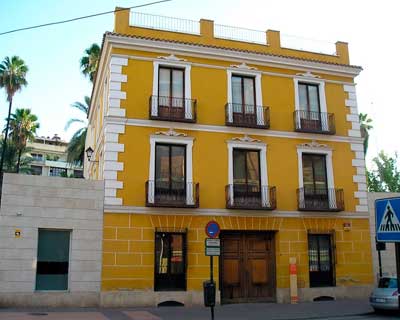
At the back is a garden of Spanish-Moorish origin, watered by the Caravija irrigation channel. The building occupies a choice position (Convent of the Agustinas, Bullfighting Museum, Salzillo Museum, Regional Crafts Centre, Salitre Gardens), and brings together the past and present of the city to show visitors its origins, its identity and its historical-artistic heritage.
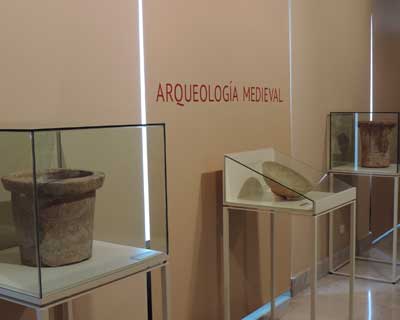
The museum is structured in such a way that, as you walk through its rooms, you can discover the evolution that the city has experienced over the course of its history. The museum is of great importance to Murcians, as well as for tourists who want to understand the roots of and the changes experienced by the city over time.
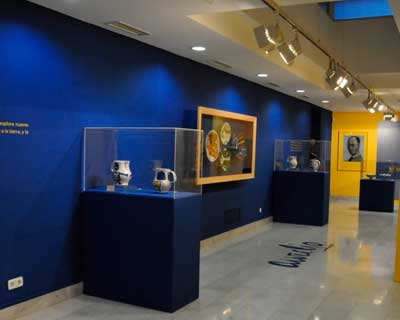
There is also an extensive program of activities and workshops for children and adults, as well as continuous temporary exhibitions.
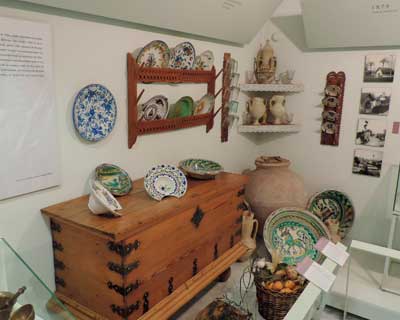
Installed in the old Palace of Junterones.
From Tuesday to Saturday from 10:00 a.m. to 2:00 p.m. and from 5:00 p.m. to 8:00 p.m.
Sundays and public holidays from 11:00 a.m. to 2:00 p.m.
Monday CLOSED
From June 11 to September 15:
Saturdays and Sundays CLOSED
MUSEUM OF SCIENCE AND WATER
Opened in 1996, it is one of Spain’s most prestigious science museums, due to its extensive programming and continuous collaborations with leading scientific organisations, as well as its diverse exhibitions.
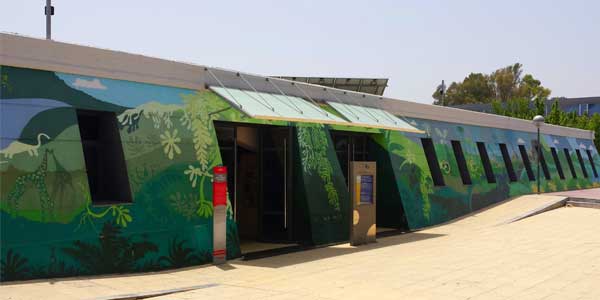
The museum is mostly focused on water, though it also has a planetarium, with shows for both adults and children, and an outdoor plaza - Plaza de la Ciencia - by the entrance to the museum, where visitors can learn about the solar system. There are also modules in the room dedicated to the youngest visitors - the Discover and Imagine Room, for children between the ages of 3 and 7 years - and an extensive program of temporary exhibitions and themed displays, as well as workshops and lectures.
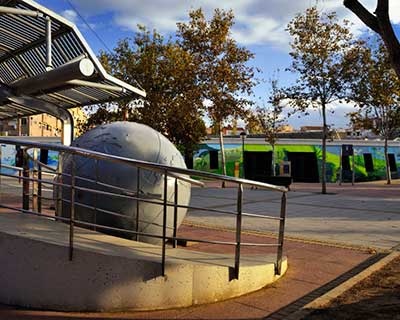
Particularly recommended for family visits, the museum aims to encourage curiosity, bringing scientific knowledge to the public in a fun and participatory way, in the belief that scientific dissemination is crucial to the democratisation of society and participation in the decision-making that may affect us in the future.
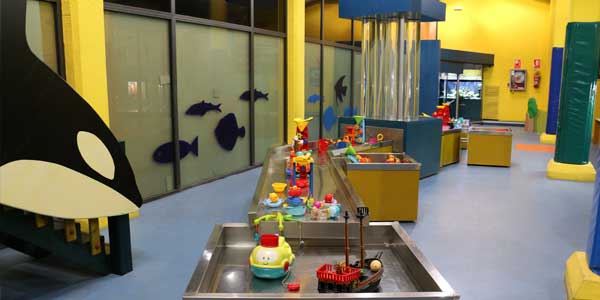
Tuesday - Saturday: 10:00-14:00 and 16:30-19:00. Sundays and public holidays: 11:00-14:00. Winter Planetarium: 13:00 and 18:00
Sundays 12:00h.
Monday - Friday: 10:00 to 14:00 and 17:00 to 20:00.
Planetarium Summer: 13:00 and 19:00.
Monday closed.
Summer timetable (16 June - 31 August)
Saturdays, Sundays and public holidays closed.
Students and groups 1 €
Planetarium 1 €
Senior citizens and children under 3 years old Free.
UNIVERSITY MUSEUM
The Museum of the University of Murcia is located in Hall 4 of the Jaime I Former Artillery Barracks. These barracks consist of six large halls around a large parade ground, today used by the town as a leisure and recreation space.
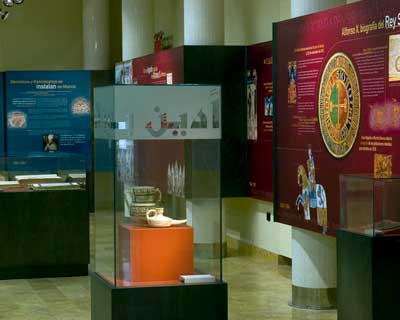
The building was completely renovated between 1999 and 2001, and inaugurated as a museum in 2003.
The main objective of the museum is the collection, preservation, conservation, study and exhibition of an important series of items from the University of Murcia. These items are mainly of a technical, scientific, artistic or cultural nature, which for the most part have become obsolete or antiquated in teaching. These collections create a coherent story of the history of research at the University of Murcia.
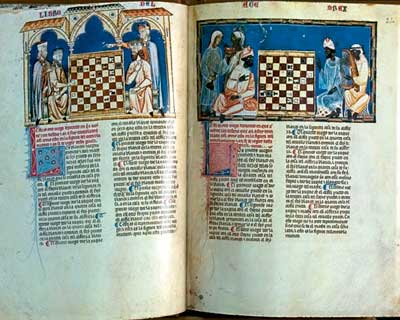
The Museum has a technical area for the preservation, cataloguing and registration of objects that make up its permanent collection, with more than 3000 pieces. The digital catalogue is currently being updated.
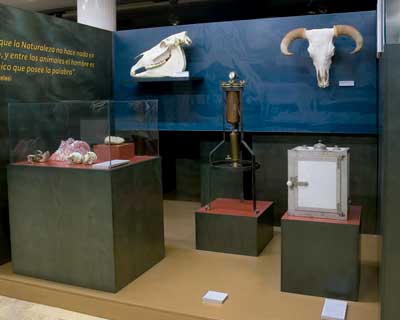
The José Nicolás Almansa Temporary Exhibition Hall has exhibitions of all kinds, and has already hosted 70 temporary displays.
LOS MOLINOS DEL RIO WATERMILL MUSEUM
Part of a declared site of Historic-Artistic Interest, the River Segura water mills were renovated in 1985 by the Town of Murcia, the Ministry of Public Works and Urban Development, and the Autonomous Community of the Region of Murcia.
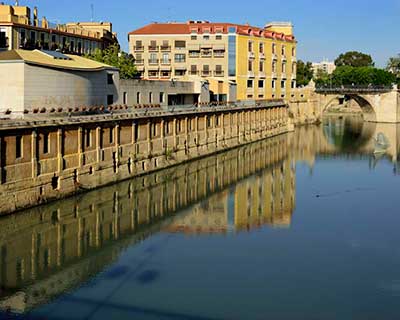
The aim was to convert the old flour mills into a Cultural Centre and Watermill Museum. The project was entrusted to the architect Juan Navarro Baldeweg, whose proposal was to return the mills to their older, more genuine appearance, guaranteeing the conservation of a monument and a very unique piece of industrial archaeological heritage.
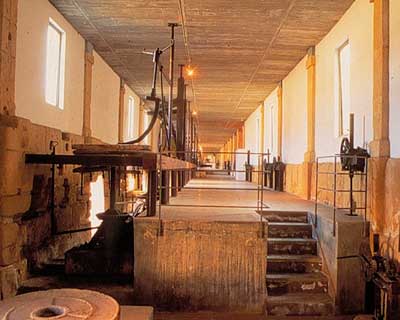
The building, inaugurated in 1989, is included among the list of the ten best from the 1980s in Spain, and contains the largest display of grinding stones in the country.
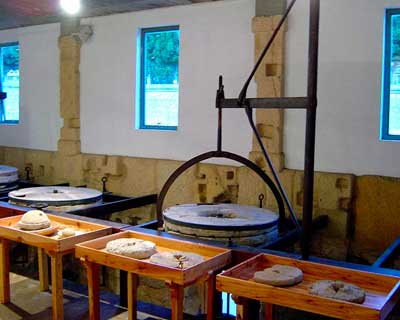
Since that year, it has mainly been used for the permanent exhibition of the flour mills, as well as a continuing program of temporary exhibitions, with the aim of sharing and deepening historical, ethnographic and archaeological knowledge of Murcia.
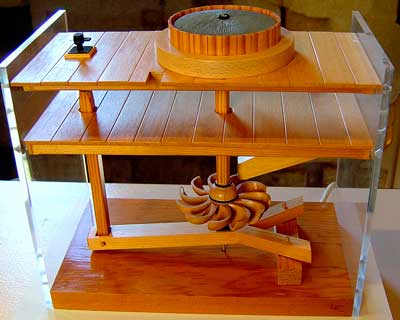
Since 2008 the space has been used for greater contemporary art and contemporary culture in its programming, both in the exhibition spaces as well as in the auditorium, with the aim of supporting a new reading, in which there is a constant dialogue between the past and the art and culture of the 21st century.
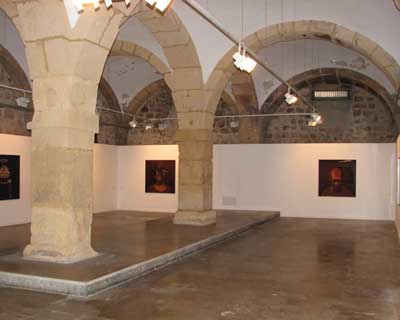
Monday - Saturday: 10:00 to 14:00 and 17:00 to 20:00.
Monday - Friday: 10:00 a.m. - 2:00 p.m. and 6:00 p.m. to 8:00 p.m. Schedule August:
Monday - Friday: 10:00 p.m. to 2:00 p.m.
Sundays and public holidays closed.
Hours July: Saturdays, Sundays and public holidays closed
Hours August: Saturdays, Sundays and public holidays closed.
SAN JUAN DE DIOS MONUMENTAL SITE
This delightful 18th century church boasts an oval floor. Decorated with rococo plasterwork and altarpieces of trompe l’oeil architecture, the work of Italian Paolo Sístori, and with a splendid main altarpiece made of marble and jasper, it is home to all the arts: architecture, sculpture, painting and music. Combined with the permanent smell of incense, it recreates a true baroque atmosphere to delight all the senses.
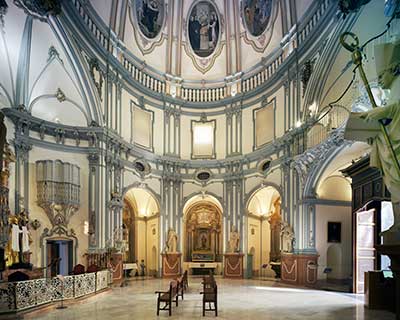
The museum is made up of three thematic areas: the church of 1781, the space dedicated to 20th century sculptor Juan González Moreno in the choir, and the archaeological remains of the main Alcázar of Murcia, underground - the wall, oratory and pantheon.
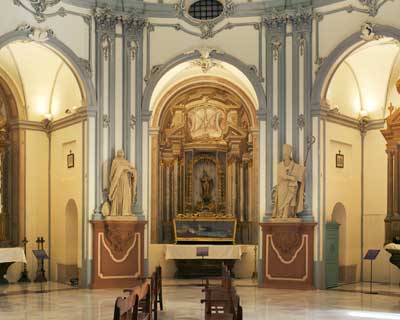
It is one of the most comprehensive collections of religious sculpture in the region, with pieces ranging from the 15th century to the early 20th century. These works from the most significant sculptors can be admired in their own context, in the environment for which they were created, since the original imagery of the church has been preserved almost in its entirety. There is always baroque background music, appropriate to the liturgical season.
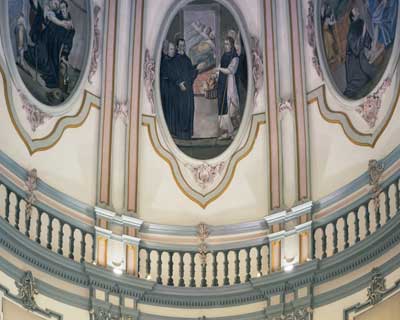
It is also used as a place of worship, promoted by the brotherhoods who have their canonical residence in this church, ensuring that the church does not lose its true and original purpose.
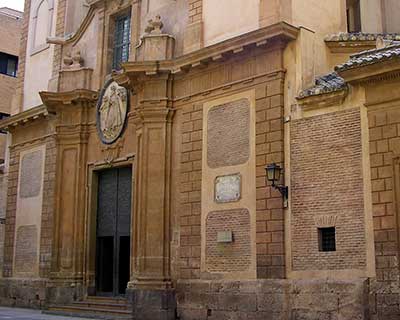
Tuesday - Saturday: 10:15h, 11:00h, 11:45h, 12:30h, 17:15h, 18:00h, 6:45 p.m. Sunday: 10:15h, 11:00h, 11:45 a.m., 12:30 p.m. Guided tours summer:
Tuesday - Sunday and public holidays: 10:15 a.m., 11:00 a.m., 11:45 a.m.,
ARCHICOFRADÍA DE LA SANGRE MUSEUM
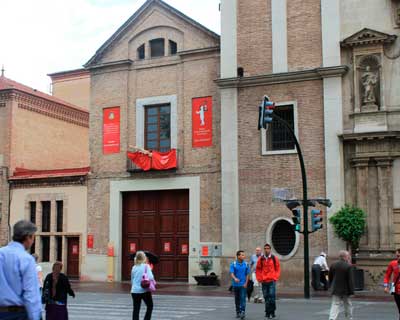
Opened in 1994 with the primary purpose of preserving the heritage and offering visitors an overview of the items and history of the Archconfraternity, with sculptures ranging from the 17th century to the 20Th century, as well as a variety of items and Passion Week ornaments that signify one of the more baroque and traditional institutions of Holy Week in Murcia.
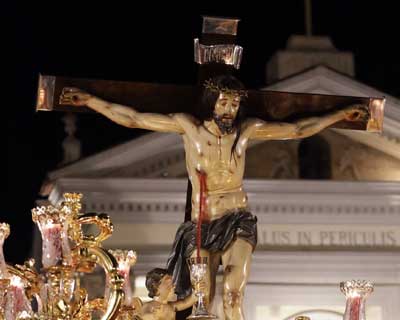
Among the most notable sculptors are Nicolás de Bussy, precursor of the Murcian Baroque school, with his masterpiece Santísimo Cristo de la Sangre (Holy Christ of the Blood), located in the chapel of the church where it is worshipped. There are also works from Francisco Salzillo’s best disciple, Roque López, the most continuous link of his style in his works such as La Samaritina (The Samaritan Woman), which highlights the Salzillo-esque traits of Christ, and the beauty and elegance of the women dressed in 18th century fashion and impressive carvings from the 20th century, such as El Lavatorio (The Washing) by sculptor Juan González Moreno.
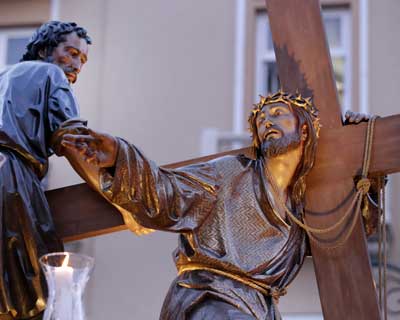
There are currently new facilities under construction for the museum, and the sculptures can be viewed in two locations: The Parish Church of Carmen and El Martillo exhibitions room at the Bishop’s Palace Annex.
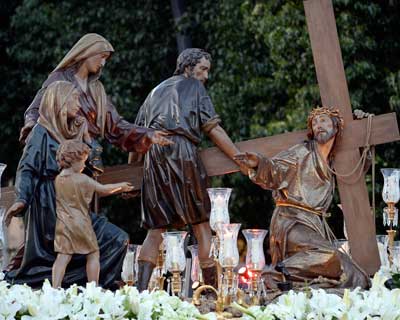
(Ubicación Temporal)
Tuesday - Saturday: 10:00-13:30 and 17:00-20:00. Sundays and public holidays: 10:00-13:30.
Monday - Thursday: 10:00-13:30 and 17:00-20:00. Friday: 10:00-13:30.
Monday closed.
Summer timetable:
Friday afternoon, weekends and public holidays closed.
AUGUST CLOSED.
BULLFIGHTING MUSEUM OF MURCIA
The museum is part of the Murcia Bullfighting Club, today the senior member of bullfighting clubs around the world. It was created the same day as the La Condomina bullring. It is currently based in a building built in 1920 inside the Salitre Gardens, though it has moved headquarters nine times in the past.
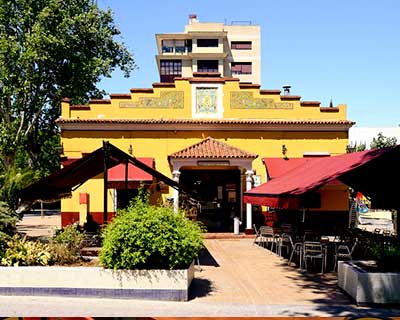
The museum hosts a range of paintings, graphic art, textiles, tools and objects, historical documentation and pieces of contemporary art. Of particular note are the heads of important bulls that have passed through the Condomina bullring, and a collection of 30 posters, dating from 1887 to 1913. There is a collection, unique in Spain, of over 30 tambourines hand painted by Murcian artists. Over 300 posters from 1830 to 1935, many in coloured silk, reflecting an important part of the history of bullfighting, bullfighting costumes, ceremonial capelets, picador jackets, banderillas (de fuego, ordinarias, de lujo, divisas, puyas, etc.).
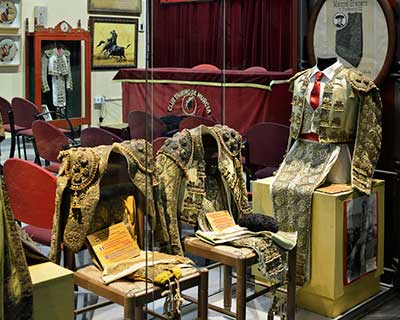
The Murcia Bullfighting Club, recognised for its age with the Gold and Silver medals of the Royal Spanish Bullfighting Federation, also has an extensive library and video library, as well as a spacious café where you can sample regional cuisine.
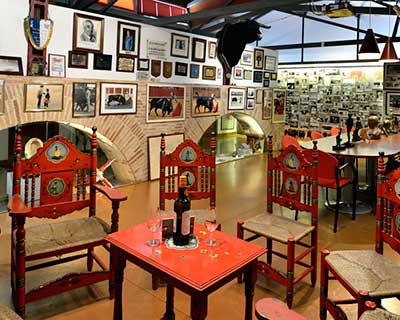
Monday - Friday: 8:00-21:00h. Saturday and public holidays: 9:00-21:00h. Sundays: 9:00-14:30
(approximate schedule).
Monday - Friday: 9:00-21:00h Saturdays and public holidays: 9:00-21:00h (approximate time).
UNIVERSITY OF MURCIA AQUARIUM
The University of Murcia Aquarium is a great addition to the cultural and leisure activities in Murcia. A space open to the public which is also dedicated to fascinating educational and research work.
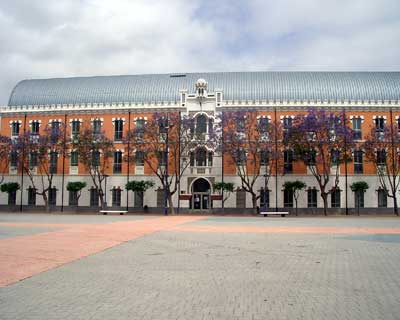
The aquarium houses some of the most interesting and eye-catching species of marine life on the planet.
You can see coral reef environments and fish from the Indian Ocean, Pacific Ocean, Red Sea, Caribbean and, of course, a vast representation of marine life from the Mediterranean and the Mar Menor.
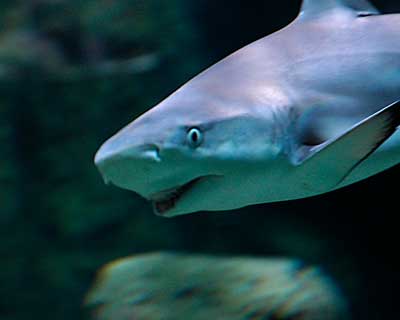
In addition to sharks, you can also see the fascinating complex relationships between different sea creatures (like the symbiosis between clown fish and anemones…) and even examples of adaptation to different environments, like the stone fish (one of the world’s most venomous animals).
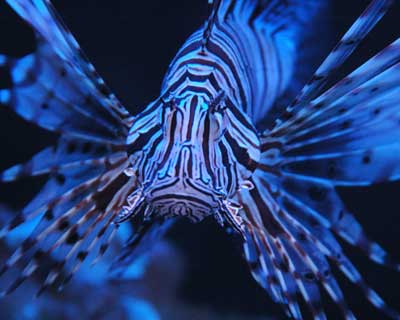
Tuesday - Friday: 10:00-17:00h. Saturday: 10:00-14:00 and 17:00-19:00 Sunday. : 11:00-14:00h. Last access, half an hour before closing.
Tuesday - Saturday: 10:00-14:00 and 17:00-21:00. Sunday: 11:00-14:00.
Monday and public holidays closed
Summer timetable (April - October):
Monday and public holidays closed
Weekend of July closed
AUGUST CLOSED
Groups + 6pax 3 € per person with guide
Groups + 25pax 2'5 € per person with guide.
Available also Annual bonuses.
Consult in the Aquarium.
MUSEUM OF MOORS AND CHRISTIANS
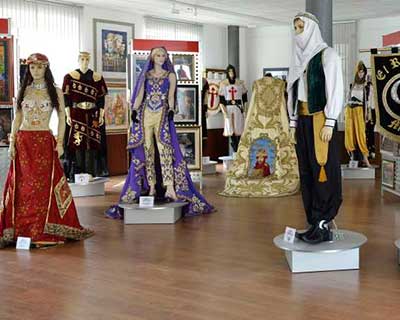
The Museum of the Federation of Associations of Moors and Christians, being its President Don Alfonso Gálvez Pérez, was inaugurated on March 27, 2011 by the Mayor of Murcia Don Miguel Ángel Cámara Botía.
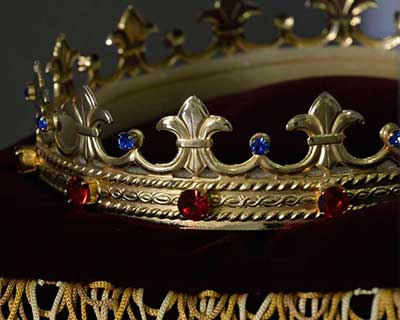
In this Museum we can find costumes of each kabbalah and mesnadas, banners, costumes of Kings and Favorites, the embroidered layer of Lorca of the Moorish Ambassador and there are exposed pictures and photographs representative of the murcian artists' festivities. Hours: Monday to Friday. 10 to 13.30 Location: Artillery Barracks. C / Cartagena.
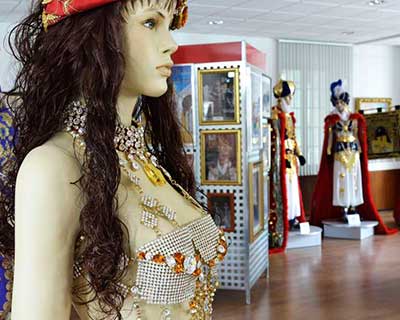
SARDINERO MUSEUM
The Museum of the Association Sardinera of Murcia, occupies an area of 160 m2, in the Artillery Quarters of the City.
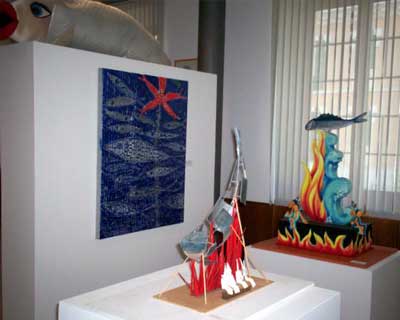
In its interior it houses the most recent patrimony of this group consisting of a pinacoteca composed by the originals that have given rise to the announcing posters of the Fiesta, that began in 1988 with the painted by Ramón Gaya, until the 2007 work of MUHER. It also includes a series of trophies and distinctions among which is the Gold Medal of the Region of Murcia, the Gold Medal of the City of Murcia, as well as the documentation that has given rise to the Declaration of Fiesta of International Tourist Interest . It also shows a collection of models in which you can see the last catafalque of the Quema de la Sardina.
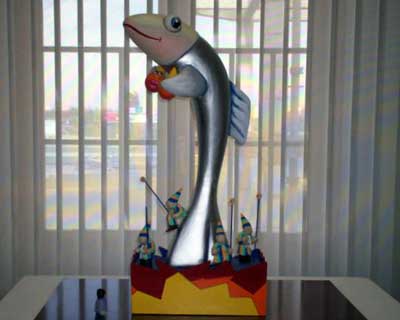
Also displayed are the Flags and Banners of the 23 sardine groups that open the parades and parades. Inside you can see some toys that are pulled from the floats at parties as well as the first suit of the pet, which delights the children.
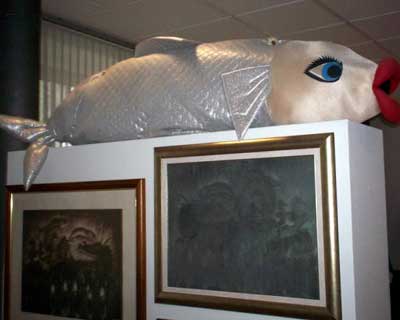
- 30002 - Murcia
Monday - Thursday: 9:00-13:30 and 16:30-19:30. Friday: 8:00-15:00.
Monday - Friday: 9: 30-13: 30.
Saturdays, Sundays and public holidays closed.
May - December:
Saturdays, Sundays and public holidays closed
AUGUST CLOSED.
CASA DEL BELÉN
The Clock Tower or Torre de los Ayllón, located in Carril de la Torre, is the oldest building in Puente Tocinos. It was built in the middle of the 18th century as a family home of a noble family and consists of 2 floors with a total area of 635 m2 on a plot of 1,175 square meters. The rehabilitation carried out in 2013 has respected its spatial configuration and basic structures, as well as the most significant ornamental elements of the façades: the heraldic shield carved in stone, with the arms of the Ayllón and crowned by the cross of Calatrava, and the sundial.
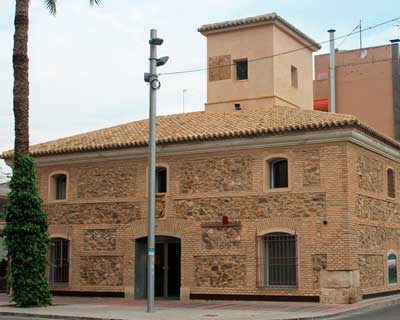
Former Clock Tower of Tocinos Bridge, which has been renovated to house exhibitions of nativity scenes, as this town is the cradle of this tradition, thus becoming the House of Bethlehem. The building has a showroom, which occupies part of the ground floor and the first and which houses emblematic works of the traditional nativity scene in mud, a projection room and another large diaphanous exhibition hall that occupies a new area of open enlargement visually To the rear garden through a large window. The main entrance gives way to a double height hall, from where the tour begins by the exhibition halls located on the ground floor for permanent and upper samples where temporary exhibitions are organized.
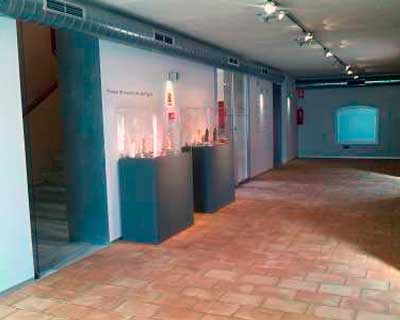
Likewise, the garden has been remodeled so that outdoor exhibitions can be held. Here, a porticoed area has been built where a craftsman workshop is recreated and where demonstrations and workshops are held.
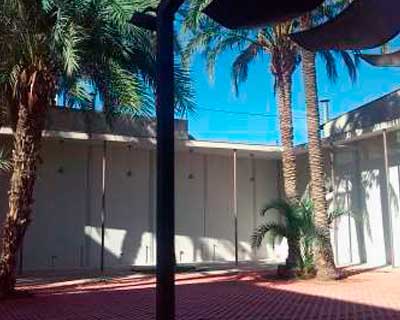
- 30006 - Puente Tocinos (Murcia)

